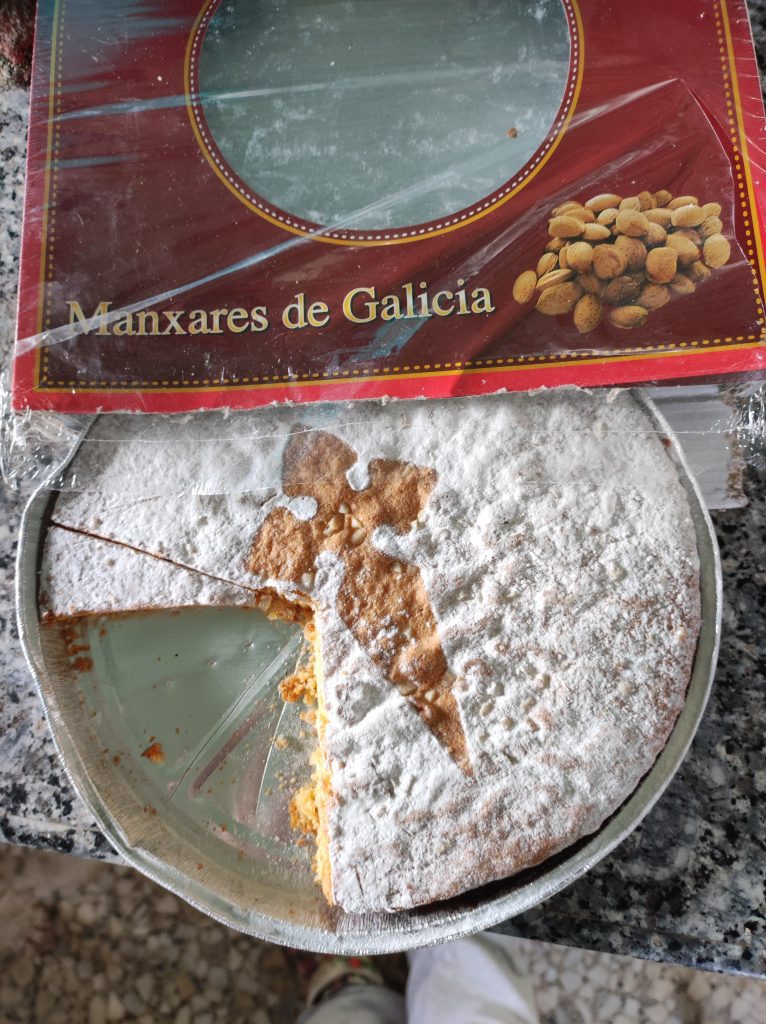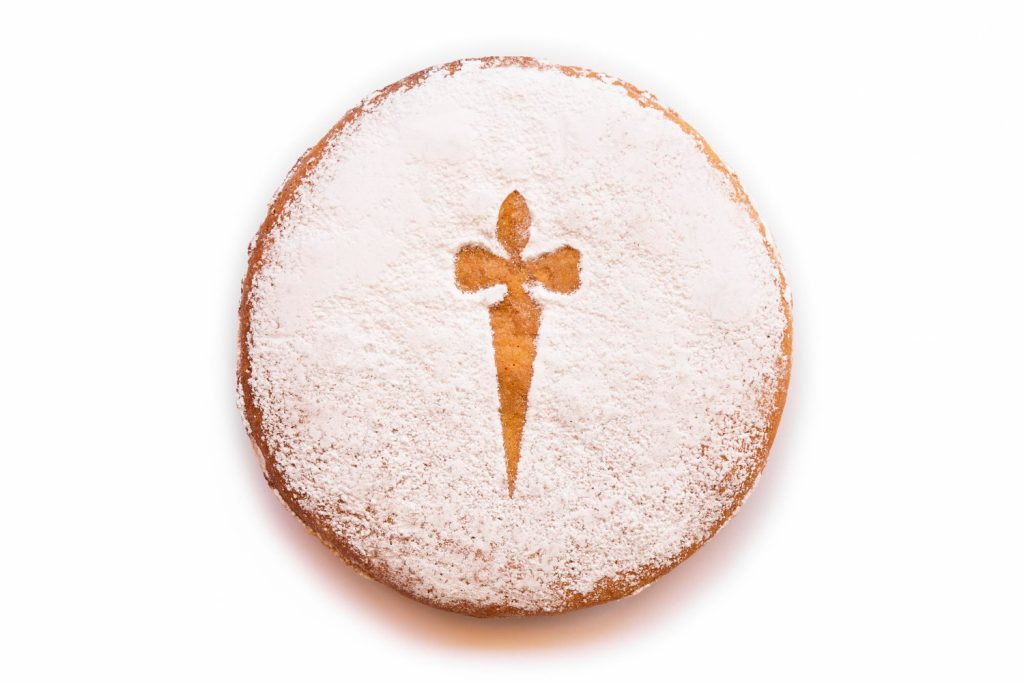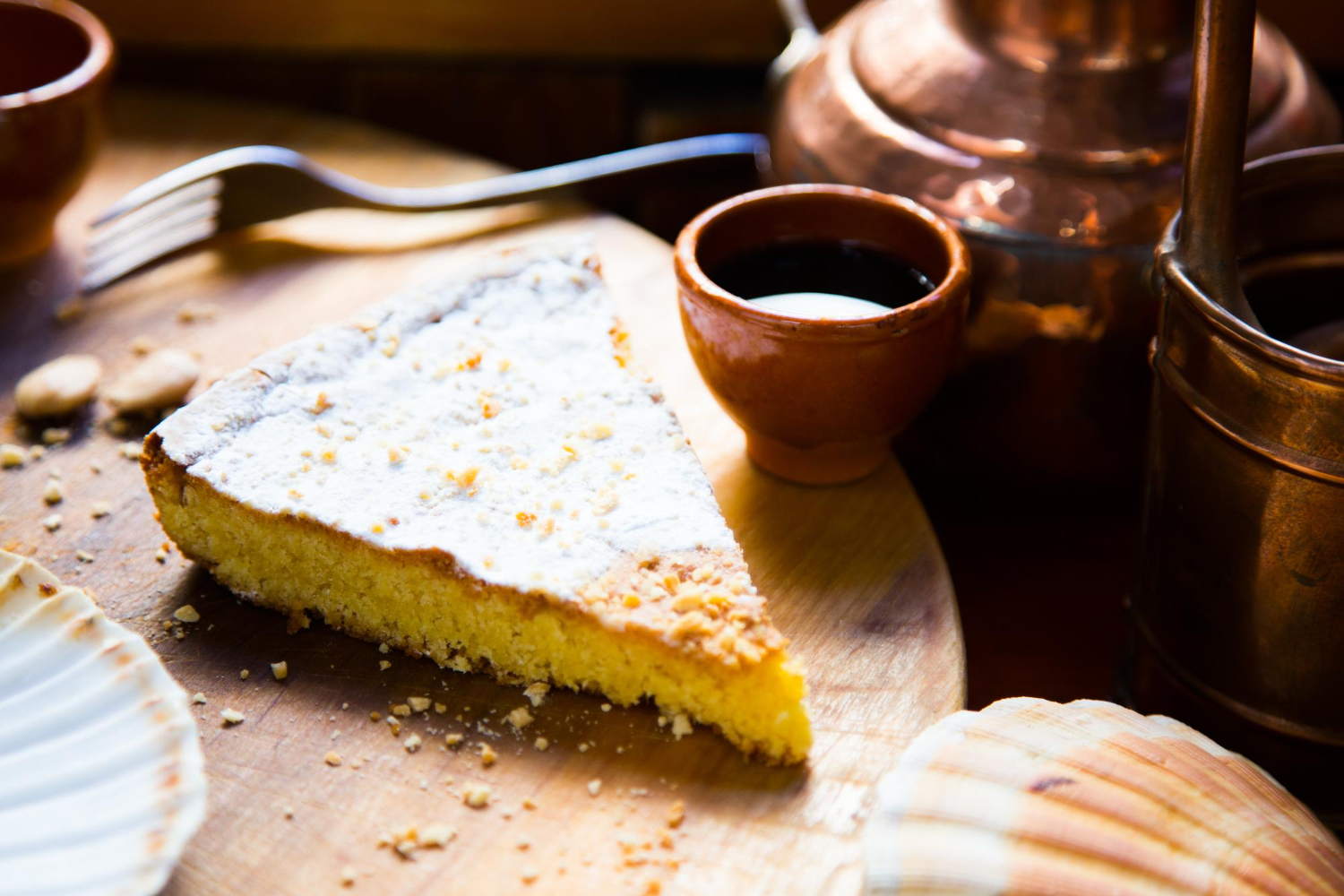Torta de Santiago, also known as Tarta de Santiago, is a delicious traditional dessert hailing from the beautiful region of Galicia, located in northwestern Spain. This almond cake or pie has a rich history dating back to the Middle Ages and its origins are closely tied to the Camino de Santiago, one of the most famous pilgrimage routes in the world.
This delightful cake is not only popular among pilgrims who walk the Camino de Santiago, but also among the locals of Galicia, stretching right up to the Lugo coast. Its simple yet delicious recipe has been passed down from generation to generation, making it a beloved part of Galician culture.
In this blog post, we’ll explore the fascinating history of Tarta de Santiago and its connection to the Camino de Santiago. We’ll also take a closer look at the ingredients and preparation of this delectable dessert and share some tips for baking it at home. So, whether you’re a seasoned baker or just looking to try something new, get ready to indulge in a slice of this famous Galician treat!

History and Traditions of Torta de Santiago:
As mentioned, the Torta de Santiago has its roots in the Camino de Santiago pilgrimage. Legend has it that during the Middle Ages, a pilgrim on the Camino de Santiago stopped at a bakery in Santiago de Compostela and asked for a piece of bread. The baker’s wife, who was moved by the pilgrim’s journey, decided to bake a special cake for him instead. She used ingredients that were readily available in the region such as almonds, eggs, sugar, and lemon zest, and created what we now know as the Torta de Santiago.
The cake became so popular that it became a staple dessert for pilgrims walking the Camino de Santiago, and it eventually spread throughout Galicia. Today, the Torta de Santiago is an essential part of Galician cuisine and is often served during special occasions such as weddings, baptisms, and other religious celebrations.

How to Eat Torta de Santiago
Traditionally, Torta de Santiago is served plain, without any frosting or decoration. The cake is typically dusted with a generous amount of powdered sugar just before serving, which gives it a beautiful, snow-white appearance that contrasts nicely with the golden brown color of the cake.
In Galicia, it is common to serve Torta de Santiago alongside a cup of coffee or tea, or as a dessert following a meal. The cake is also often enjoyed on special occasions such as weddings, baptisms, and other religious celebrations.
When eating Torta de Santiago, it’s best to savour the nutty, sweet flavours of the almonds and the subtle hint of lemon zest. The texture of the cake is typically moist and dense, almost like a pound cake, and the powdered sugar on top adds a delicate sweetness and a pleasant textural contrast.
How to make Torta de Santiago
Why not have a go at making this and giving yourself a Galician treat!
Ingredients:
The Torta de Santiago is a simple yet flavorful cake made with only a few ingredients. The primary ingredient is almonds, which give the cake its distinct nutty flavor. Other ingredients include sugar, eggs, and lemon zest. Some recipes also call for cinnamon or vanilla extract to enhance the flavor.
How to make at home:
Here’s a simple recipe for making Torta de Santiago at home:
Ingredients:
- 2 cups blanched almonds
- 1 1/4 cups sugar
- 6 eggs
- Zest of 1 lemon
- 1 tsp cinnamon
- Powdered sugar for dusting
Instructions:
- Preheat the oven to 350°F (180°C).
- In a food processor or blender, grind the almonds until they become a fine powder.
- In a large mixing bowl, whisk together the sugar, eggs, lemon zest, and cinnamon until well combined.
- Add the ground almonds to the mixing bowl and stir until the batter is smooth and well mixed.
- Grease a 9-inch cake pan and pour the batter into it.
- Bake for 35-40 minutes, or until the cake is golden brown and a toothpick inserted into the center comes out clean.
- Let the cake cool completely in the pan, then remove it and dust with powdered sugar.
- Serve and enjoy!
The Torta de Santiago is a delicious and easy-to-make cake that is deeply rooted in the history and culture of Galicia. Whether you’re a seasoned baker or just starting out, this cake is sure to impress your friends and family. So why not give it a try and see why it has been a favourite of pilgrims and locals alike for centuries!

